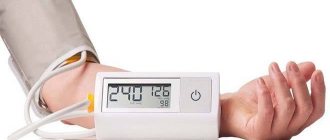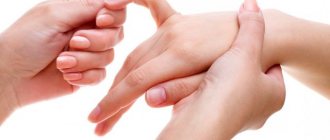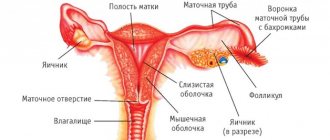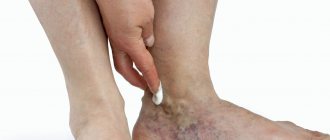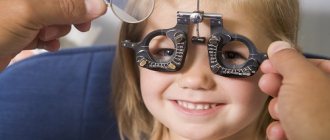Vessels are an integral part of the circulatory system. The blood flow in the body depends on their functioning. Some pathologies are characterized by rupture of blood vessels. In this case, spontaneous hematomas may appear. They occur either due to injury or due to internal disorders.
You need to understand that at the first manifestations of such a problem you should immediately consult a doctor. In a healthy person, blood vessels may occasionally burst under the influence of certain factors. However, this phenomenon is infrequent and manifests itself only as bruises. If hematomas occur constantly due to unknown reasons, then you need to visit a doctor. A phlebologist treats such problems.
Causes
Many people are interested in what a burst blood vessel on the hand looks like. This process manifests itself as bruises. Fragility of the bloodstream is most often observed in old age. This is due to the accumulation of salts, cholesterol and lipids. Accordingly, the vessels wear out, their functionality begins to deteriorate, and problems with elasticity appear. It is important to consult a doctor immediately when the first symptoms occur, otherwise you may wait for unpleasant consequences to develop.
Many people wonder how to deal with the fact that a blood vessel in their hand has burst. The causes are the most important factor that influences further treatment. There are external and internal provoking conditions.
The first is the following list:
- excessive loads;
- ingestion of chemicals into the body;
- thermal effects;
- injuries;
- allergies to cosmetics;
- taking medications that affect the condition of blood vessels;
- prolonged stress;
- sedentary lifestyle.
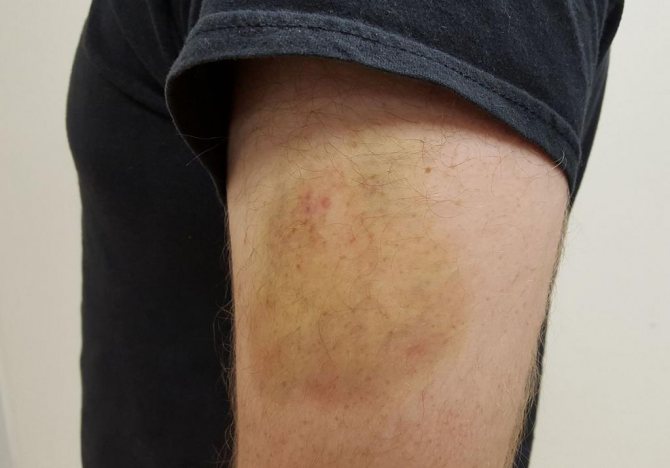
Internal reasons include:
- endocrine system disorders;
- kidney and liver problems;
- elderly age;
- high blood pressure that occurs too often;
- stress;
- hormonal imbalance (or taking hormonal medications);
- HIV;
- infections that affect the condition of blood vessels;
- allergies to medications;
- lupus erythematosus;
- excess weight;
- oncology;
- avitaminosis;
- constant pressure surges;
- problems with blood circulation in the brain.
Therapy
Any treatment begins with determining the cause of the painful condition and eliminating it. With blood vessels bursting on the hands, sometimes everything is very simple - mechanical, chemical, thermal injury. In this case, special therapy is not carried out, since the main therapeutic measures are aimed at healing and restoring damaged tissues.

In case of spontaneous rupture of capillary walls, a consultation with a phlebologist and a detailed diagnosis of the problem is necessary. Based on the results of a medical examination, treatment is prescribed for the disease that has led to weakening of the capillaries, or compensatory procedures aimed at restoring normal functioning of the body. To relieve acute symptoms (swelling, inflammation, pain), it is recommended to lubricate the skin with Troxevasin ointment.
In any case, the main goal of therapy is to eliminate factors that negatively affect the condition of blood vessels and their strengthening.
If the cause of the painful condition is a lack of vitamins in the body, treatment consists of taking special medications containing vitamins that help strengthen blood vessels, increase their tone and elasticity. For medicinal purposes, a special therapeutic diet and preparations with vitamins are prescribed:
If the reason for the bursting of a blood vessel on the finger is an allergic reaction to organic or inorganic substances that enter the body through the skin or through food, treatment consists of taking antihistamines prescribed after examination by a doctor.
To exclude the fact of physical inactivity, patients are prescribed physiotherapy, special therapeutic exercises, and massage. Physical exercises are performed at home using the so-called vibration technique, when you raise your hands high up and begin to shake them finely. Such movements help remove platelets and cholesterol deposits stuck to the walls from the duct, tone and strengthen blood vessels, and activate arterial circulation.
For the treatment of VARICOSE and cleaning blood vessels from THROMBUS, Elena Malysheva recommends a new method based on Cream of Varicose Veins. It contains 8 useful medicinal plants that are extremely effective in the treatment of VARICOSE. Only natural ingredients are used, no chemicals or hormones!
Hardware treatment methods include microsclerotherapy, laser therapy, and eloscoagulation. However, such procedures are resorted to only in complex cases when conservative therapy is not enough to restore the integrity of the wall of the burst vessel.
In the thickness of the skin there are many small capillaries, and larger arteries and veins run deeper. When blood vessels in the legs burst, a small amount of blood enters the subcutaneous space. This usually happens as a result.
To distinguish hemorrhage from ordinary redness or a mole, you need to press your finger on the area with a changed color. When blood leaks from a burst vessel, the stain will not fade.
Read in this article
Symptoms
If a person’s blood vessels burst on his hands and bruises appear, then he should pay attention to his condition as a whole. Bleeding from the nose can often be a concern. If a similar problem is observed in the warm season, then cyanosis of the skin occurs and a feeling of chills appears.
For any patient, a hot day will bring only trials. The patient complains of dizziness, pain in blood vessels, aches, tachycardia and loss of consciousness. There may be problems with the vestibular apparatus. Spider veins can be seen on the skin. They appear due to the fact that the capillaries rupture.\
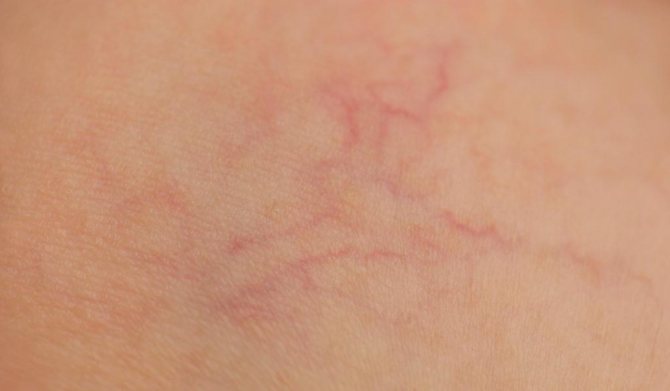
If a person develops subcutaneous hematomas on his hands, he should immediately consult a doctor. He will be able to prescribe effective treatment.
Causes of a blood vessel bursting on a finger
Injuries of various types are the most common reason that blood vessels on the fingers burst.
The bruises that appear in this case often go away on their own and quickly enough, without causing any special concern. There are other reasons that can disrupt the integrity of blood vessels and cause internal hemorrhages on the fingers, for example:
- various diseases of the thyroid gland, kidney pathologies, hypertension, vegetative-vascular dystonia lead to fragility of blood vessels;
- frequent stressful situations;
- burns and frostbite;
- frequent exposure to solarium lamps;
- peeling, rubbing the skin with hard washcloths;
- allergy to synthetic detergents: if you find a bruise on your fingers after using a new dishwashing detergent, it is better to buy another household chemical;
- physical exercise often leads to an increase in pressure, at which the walls of the capillaries rupture, resulting in the formation of hematomas;
- capillary fragility is typical for older people, so they often have bruises on their arms;
- lack of vitamins of various groups;
- capillaries and veins can burst in women suffering from hormonal imbalances;
- decreased immunity due to a recent illness.
Before you understand why blood vessels in a finger burst, you need to understand what the vessels are.
The circulatory system is very strong, and when it is healthy, not every blow or bruise can lead to a hematoma, rupture of capillary walls or a bruise.
Otherwise, the frequent appearance of such signs indicates disorders in the body, as well as weakness of the walls of blood vessels, it is necessary to consult a specialist.
The causes of a burst blood vessel on a finger (see photo below) are very diverse.
- The most common cause of burst capillaries is trauma and bruises. The impact causes rupture of the vessel wall and internal hemorrhage. In this case, there is no reason to worry, and the bruise will go away on its own.
- Pathology of the thyroid gland also affects the fragility of the circulatory system.
- Diabetes.
- Kidney pathologies.
- Stress.
- Burns, frostbite, frequent visits to the solarium.
- Peeling with rough washcloths and gloves can also lead to the destruction of capillary walls from frequent friction.
- Vegetovascular diseases.
- Hypertonic disease.
- Strong physical activity leads to increased pressure, which causes the capillary wall to rupture. In this case, you need to slow down your training pace.
- Allergy to household chemicals. If you washed the dishes with a new product, and a blood vessel burst on your finger and a bruise appears, what should you do? It is necessary to take an antiallergic drug and change the detergent.
- Excess weight leads to additional stress on the circulatory system, which can cause varicose veins of the lower veins, vascular nodules with bruising and other internal injuries to the veins.
- A sedentary lifestyle leads to blood stagnation, which leads to blood clots.
- Fragility of the walls of the circulatory system as a whole. This disease manifests itself mainly in older people, due to the development of atherosclerotic plaques. These bodies accumulate in the vessels, which interferes with their patency.
- Lack of vitamins B, B5, C, P, PP, Rutin and others also negatively affects the strength of capillary walls.
- Passive lifestyle.
- Hormonal imbalance in women.
- Complications after an illness and reduced immunity can also lead to a blood vessel bursting on a finger and a bruise appearing. What to do in this case? We'll tell you a little later.
When burst blood vessels appear on the arms and legs, it can be assumed that serious disorders are occurring in the body. Most often, this phenomenon affects elderly people, who develop bruises when capillaries burst.
The pain in the arms and legs can be quite sharp and excruciating.
With such symptoms, treatment must begin as soon as possible after visiting a phlebologist and undergoing all necessary diagnostic procedures.
We will tell you what to do in case of this problem further...
The content of the article
The human circulatory system is quite strong in a healthy state. But at the slightest disturbance in the body, the immune system weakens, which in turn affects the strength of blood vessels.
Not every bruise or blow can cause bruises in the injured area, but if such abrasions occur, and with noticeable frequency, then close attention should be paid to this.
Some blows may be accompanied by the appearance of a hematoma, leading to rupture of the capillary walls and the formation of bruises. This phenomenon is considered pathological, as it occurs under the influence of unfavorable factors.
With such symptoms, treatment must begin as soon as possible after visiting a doctor, phlebologist and undergoing all necessary diagnostic procedures.
We will tell you what to do in case of this problem further{amp}amp;#8230,
If a blood vessel bursts on a person’s finger, the reason most often lies in the fact that the vascular walls have lost their firmness and elasticity. Depending on the factor that provoked the pathology, a therapeutic course is prescribed or it is recommended to use traditional medicine.
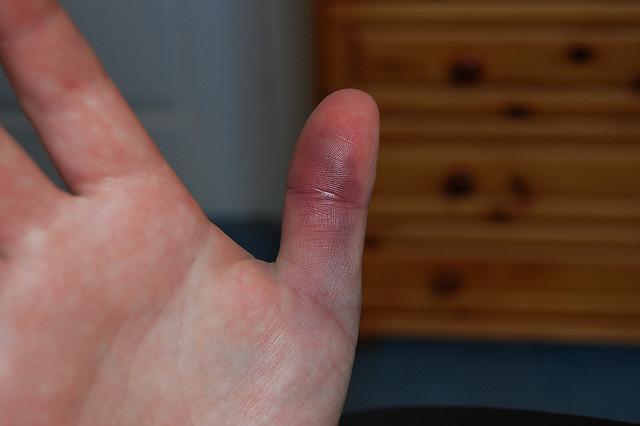
There are various reasons that provoke fragility and fragility of blood vessels in the hand. One of the main factors is a decrease in the elasticity of the wall in blood vessels. As a result of a small bruise, and even without it, hematomas and bruises appear on the hands - blood accumulates under the skin.
In a healthy person, elastic vessels can withstand a short-term increase in pressure; only with excessive force - a blow or pressure - do bruises appear. This is a normal situation and does not cause concern. If hematomas appear on their own, this is a reason to go to the doctor.
When a blood vessel on a finger bursts, the reasons are hidden in the disorders existing in the body. They require correction or serious treatment, depending on the etiology of the disease. Elderly people often turn to a phlebologist because the capillaries in their hands often burst. The reason lies in age-related changes - salts and fats are deposited on the inner surface of the vessels, cholesterol plaques disrupt blood circulation, making the walls fragile. As a result, the vascular system wears out, and the capillaries themselves become brittle.
There are not always good reasons justifying the appearance of hematomas on the hands. However, you should not let the situation take its course. If there is a problem, you need to go to the doctor and get examined, some factors can lead to more serious consequences than burst capillaries. Doctors distinguish between internal and external provoking factors. In medicine they are called endogenous and exogenous.
Endogenous factors associated with bursting blood vessels on the hands include:
- chronic liver and kidney diseases;
- hormonal imbalance during pregnancy and menopause, after abortion and long-term use of hormonal medications;
- diabetes mellitus, thyroid disease;
- VSD.
Those who have many capillaries on their hands need to be careful - stress on the hands will provoke the appearance of bruises.
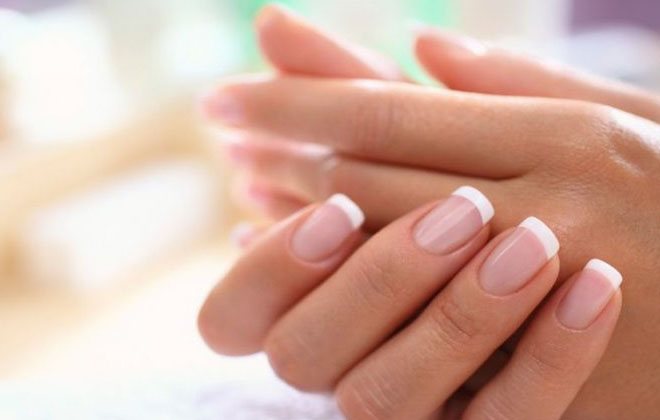
Other reasons why blood vessels on the fingers burst:
- hypertension and obesity;
- neuroses, hysteria;
- lupus erythematosus;
- violation of cardiac / cerebral circulation;
- allergies that cause a decrease in the thickness of capillary walls;
- scarlet fever, rheumatism and other infectious diseases;
- HIV;
- vitamin P and C deficiency;
- age-related tissue degeneration.
Exogenous factors that cause damage to the vessels on the fingers include:
- injuries, low activity;
- solarium, peeling and other procedures;
- frostbite/burn;
- sudden changes in temperature;
- excessive passion for tanning;
- stress and passion for strength training;
- counterfeit household chemicals, neglect of gloves when working with chemicals.
Usually, if a blood vessel on a finger bursts, a subcutaneous hematoma/bruise forms in this place. More often, the problem is detected in those who suffer from excessive fragility of blood vessels.
Spider veins appear on their skin. People suffer from heat, dizziness, darkness in the eyes from abruptly rising from bed, and aching joints. Other symptoms indicating vascular weakness are motion sickness, weather sensitivity, blood pressure surges, tachycardia, fainting. If you have symptoms with hemorrhages under the skin on the arms and other parts of the body, it would not hurt to get examined.
There are many diagnostic methods to identify fragility of blood vessels and determine the cause of the condition:
- “tourniquet” method – a rubber tourniquet is put on the area in the middle of the shoulder and tightened for 5 minutes. If, while removing the tourniquet, capillaries on the skin burst, large hematomas appear, excessive fragility of the vessels is diagnosed and appropriate therapy is prescribed;
- “Pinch” method - the skin at the collarbone is folded without causing serious pain to the patient, squeezed and turned 90 degrees. In a healthy person, such exposure should not cause any skin reactions. If there is a bruise, it means the vessels are brittle;
- “percussion hammer” technique - the doctor gently taps the patient’s chest with a hammer without causing pain, and then examines the skin for the presence of hematomas.
Against the background of vascular damage, red blood cells penetrate into the space between the tissues, and when pinpoint hemorrhages merge, a large focus of hematoma is formed. Another sign of capillary fragility will be a change in the shape of the capillary loop.
The cause of hematomas and bruises on the arms is the fragility of the blood vessels. Treatment is aimed at increasing the elasticity of blood vessels and strengthening them. Therapy is prescribed after consultation with doctors of related specialties.
The first step is to inspect the diet for the amount of vitamins, then enrich it with products with angioprotective properties. It is recommended to consume chicken and rabbit, beef and veal, lean fish, fruits and vegetables, pasta and cereals, dairy products and legumes daily.
Diagnostic methods
In order to select competent therapy, it is necessary to perform all diagnostic measures. This stage is considered quite important. Let's look at the most effective tests:
- You need to take a rubber band and tie it above the elbow. After five minutes it needs to be removed. If a bruise appears, then urgent treatment should be started.
- If there are problems with blood vessels, gentle blows to the chest with a hammer will cause hematomas.
- The pinch method is the most commonly used. Near the collarbone, you need to gather the skin into a fold, turn it 90 degrees and squeeze a little. If the patient does not have problems with blood vessels, then a bruise will not appear.
Those patients who have weak capillaries are advised to take additional blood and urine tests. It is especially important to check for a coagulogram. ECG and capillaroscopy will not be superfluous. Thanks to them, you can understand how well blood moves through the vessels. Thanks to modern technologies, it will be possible to identify the condition of each capillary separately.
Diagnosis of vascular fragility
There are several techniques that will help to accurately determine that there are problems with blood vessels.
The pinching method involves grasping a fold of skin between the thumb and forefinger and then moving it. There is no need to press the skin too hard. After the test, it will be immediately clear: if a hemorrhage has formed under the skin, the condition of the vessels is unsatisfactory.
The tourniquet method is another option for determining the fragility of blood vessels. A tourniquet is applied to the area of the middle of the shoulder so that the outflow of venous blood is stopped and arterial blood is preserved. This can be checked by feeling the pulse on the radial artery. Then the tourniquet is removed and the area where it is applied is checked. If hemorrhages or petechiae appear, it should be concluded that the vessels are quite fragile and medical intervention is required.
The hammer method involves lightly tapping the chest area with a special hammer. The diagnosis is confirmed when hematomas appear in this place. It should be remembered that vascular fragility as an independent phenomenon is very rare. Basically, this is one of many symptoms of certain diseases. Therefore, before starting treatment, it is necessary to find out exactly the cause of this phenomenon and consult with the appropriate specialists.
Treatment methods
If the cause of vascular rupture is injury, then urgent action is not necessary. The bleeding will stop over time. The main thing is to provide emergency assistance correctly.
If blood vessels on the wrist or other part of the hand burst due to exposure to chemicals, you need to reduce the effect of the latter on the body. Personal protective equipment should be used to allow the capillaries to recover. With prolonged exposure to such substances, the vessels begin to thin out and become brittle.
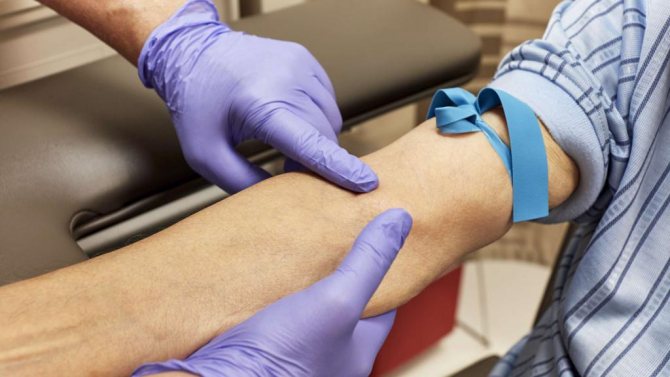
Massage and hardening should be included in the therapeutic course. You need to give up all bad habits. The doctor is also required to prescribe medications and vitamins. Treatment should be aimed not only at eliminating the root cause, but also at strengthening the walls of blood vessels. The patient's diet plays an important role here.
Eliminating the causes of burst blood vessels
The cause of hematomas and bruises on the arms is the fragility of the blood vessels. Treatment is aimed at increasing the elasticity of blood vessels and strengthening them. Therapy is prescribed after consultation with doctors of related specialties.
The first step is to inspect the diet for the amount of vitamins, then enrich it with products with angioprotective properties. It is recommended to consume chicken and rabbit, beef and veal, lean fish, fruits and vegetables, pasta and cereals, dairy products and legumes daily. It is forbidden to indulge in fatty foods and baked goods, marinades and smoked meats, and spices in large quantities. You should limit sweets and salt intake, it is better to give up alcohol, coffee and carbonated drinks.
Diet
Any person will be able to notice that a blood vessel on his hand has burst. What to do? In addition to medical treatment, you must follow a diet. You need to add more vitamins to your diet. You should eat chicken, rabbit, and cow meat. Fish also has a good effect on the body. You should enrich your diet with vegetables and fruits as much as possible. Nuts and legumes won't hurt. Fermented milk products also have a good effect.
Pickled vegetables, flour, bread, smoked foods, alcohol, coffee and soda are prohibited.
How to find out what exactly is the reason
If a vein in your arm bursts, what should you do? This question is asked by everyone who has encountered this problem. Only a specialist who has the necessary set of knowledge, as well as the equipment with which you can be given an accurate diagnosis, can answer it.
Also, this doctor will tell you what is important to do in such a situation. He will tell you whether a vein in the arm can burst and what will happen if the vein in the arm bursts. After a complete diagnosis, you will be prescribed a specific course of treatment.
Medicines
The doctor will prescribe medications that relieve swelling and inflammation of blood vessels. An excellent remedy is “Suprastin”. It allows you to get rid of capillary fragility if it is the result of an allergy. “Enap” and “Captopril” are used for high blood pressure, which has affected the condition of the blood vessels. “Troxevasin” is necessary for all patients, regardless of why a blood vessel burst on a finger or in another place. It will strengthen the walls of the capillaries.
Sometimes doctors use instrumental treatment methods. Laser and pulsed light are used. Microsclerotherapy is also effective. If the case is too complex and is not corrected with medications, then doctors may prescribe surgery, during which the vessel will be removed.
Treatment at home
Folk remedies
With increased fragility of capillaries, as a rule, the body lacks vitamin C. Doctors prescribe foods to their patients that must be included in the daily diet.
These include:
- oranges,
- grapefruits,
- parsley,
- chokeberry,
- sauerkraut,
- black currant,
- fresh fruit in season.
In this case, the patient should minimize the consumption of fatty and fried foods and reduce the amount of salty foods. Alcohol must be eliminated from the diet completely.
Reference! It is important to completely exclude products based on transgenic fats from food. These foods are the main cause of high cholesterol and the formation of clogged plaques in the bloodstream.
Food should contain all kinds of vitamins and microelements, be healthy, fresh and satisfying.

It is important to engage in regular exercise outdoors.
Charging accelerates blood through the capillaries and prevents it from clogging the vessels. It is also good to rub vitamin E into the skin, which is sold at any pharmacy. It maintains the elasticity of the skin well and prevents thrombosis. Aloe juice also has a beneficial effect, healing inflammation that has arisen.
Traditional methods
Some traditional medicine methods can help if burst blood vessels appear on your hands.
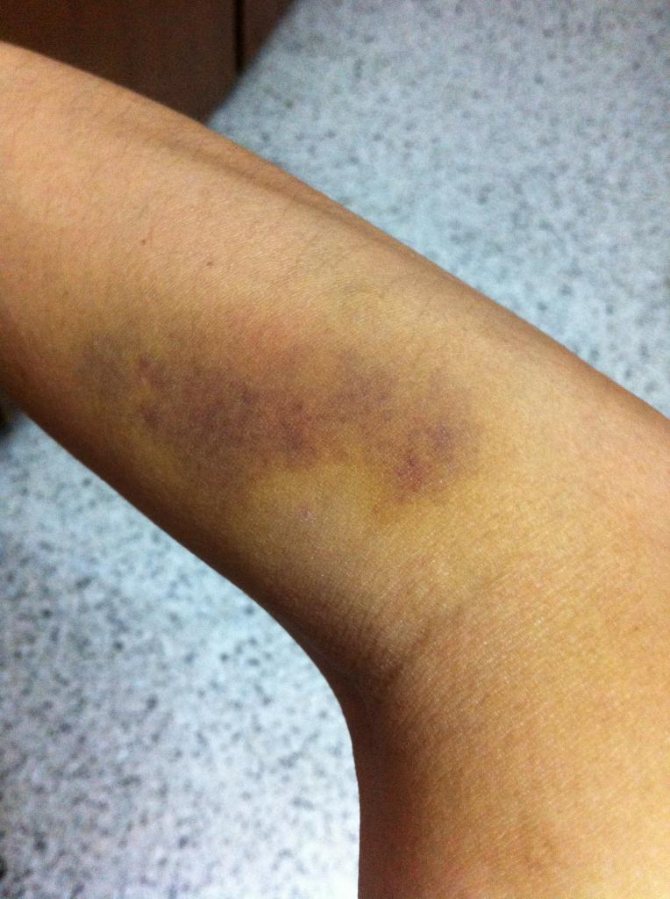
Garlic is the most popular remedy. You should eat 2 cloves per day. Then the vessels will become strong and elastic. You can also use any decoctions of lemon juice, black currant, rowan, rose hips, and walnuts. All of them are enriched with a large amount of vitamins, which has a great effect on the condition of a person and his blood vessels individually. However, you need to remember that some drugs have contraindications. Before using this or that decoction, you should consult your doctor.
Treatment
Treatment of burst vessels in the hands begins with strengthening their walls. First of all, patients who have burst blood vessels in their arms need to normalize their diet.
Diet
The diet for burst blood vessels in the hands should contain foods high in vitamins. The menu includes chicken, rabbit, lean beef and fish. It is necessary to enrich your diet with vegetables and fruits, beans and nuts. You should increase your consumption of fermented milk products.
It is strictly forbidden to eat smoked meats, pickled vegetables, and baked goods. It is strictly forbidden to drink coffee, alcohol and carbonated drinks.
When a limb is injured, severe hematomas often appear. In this case, no immediate measures should be taken, as the hemorrhage will subside over time. For an extensive hematoma, the doctor prescribes ointments with a resolving effect.
When working with chemicals, it is necessary to use personal protective equipment. Otherwise, the skin is subject to rapid aging due to systematic chemical exposure. At the same time, the capillaries become thinner, and the fragility of the vessels appears.
The course of treatment should include massage, hardening, and giving up bad habits. At the same time, the doctor prescribes medications and vitamin complexes.
Drugs
Therapeutic treatment includes drugs to relieve inflammation and swelling in blood vessels, for example:
- "Troxevasin". This medicine acts on the walls of blood vessels, strengthening them. To prevent vessel fragility, Detralex is used.
- For hematomas of allergic origin, antihistamines are prescribed: Suprastin, Zodak.
- Sometimes blood vessels in the arms burst with high blood pressure, as a harbinger of a stroke. In this case, antihypertensive drugs are prescribed: Lorista, Captopril, Enap and others.
One of the treatment methods is instrumental, in which laser treatment, pulsed light treatment is carried out, and microsclerotherapy is also prescribed. In particularly difficult cases, doctors remove the damaged vessel.
Gel “Badyaga Forte”
This drug helps fight bruises and hematomas. Therefore, if an unpleasant stain appears in the most visible place due to burst blood vessels, you can remove it using this product.
The main “ingredient” of the gel is badyaga. This is a freshwater sponge. It is caught in reservoirs. As a rule, it accumulates on snags and stones. It is dried and then ground into powder. This gel, when applied to the skin, causes surface irritation. Because of this, the vessels dilate and begin to move blood faster. The product also has a resolving and bactericidal effect.
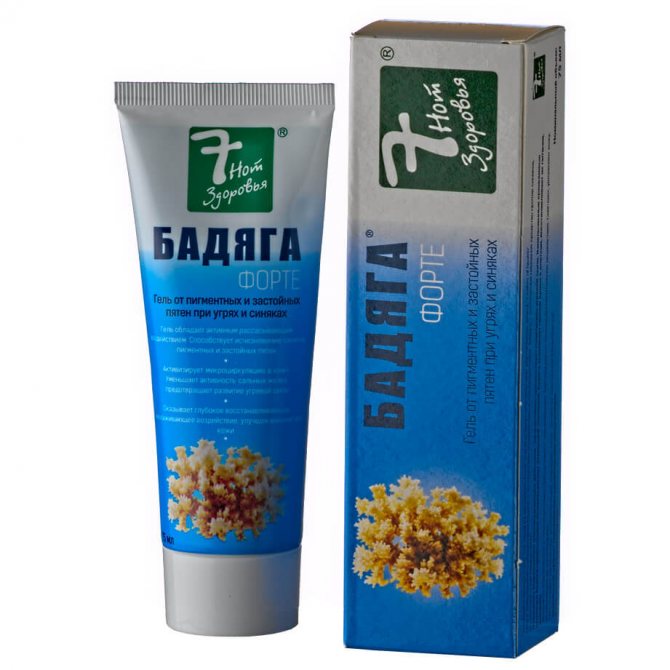
What effect does the gel have?
The instructions for the drug describe the effect that the use of the gel leads to. It will be an excellent method for combating bruises due to burst blood vessels. Hematomas on the hands are easy to hide, but sometimes they can cause severe pain. The gel will be able to eliminate it. It also relieves itching. It is able to enhance the properties of the immune system, normalize blood circulation, which is important, restore the skin, and combat the active work of the sebaceous glands. The gel can also be used when exfoliating surfaces, as it tones and regenerates them.
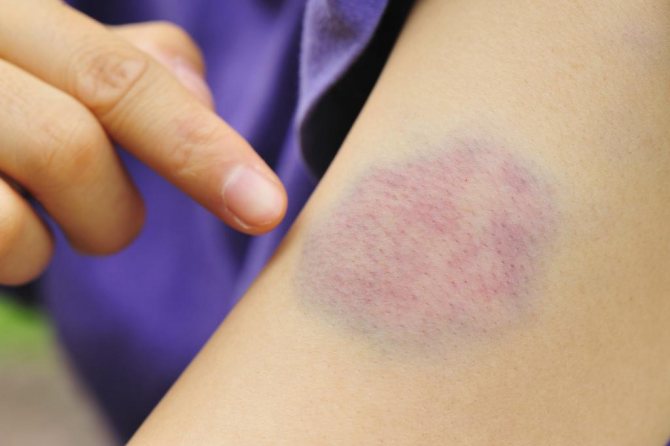
Many people use the described remedy for swelling. The gel can also warm up the skin. Due to the fact that it contains essential oils, the drug fights dead cells. You can use the gel for rejuvenation, but keeping it on for more than 20 minutes is not recommended.
Provoking factors
Fragility of blood vessels is provoked by two groups of factors: internal and external.
Internal etiological factors include:
- Hormonal imbalance in a woman’s body. Most often, a shift in the immune system occurs during pregnancy, when the body is reconstructed to a new level. Women also experience this condition during menopause, after abortion, and during long-term hormonal therapy.
- With diabetes mellitus and thyroid dysfunction, the elasticity of blood vessels is greatly reduced.
- Chronic liver and kidney diseases.
- Vegeto – vascular dystonia.
- Emotional shocks, worries, nervous breakdowns, especially frequent ones, also have a detrimental effect on the capillary network of blood vessels.
- Excess weight impairs the integrity and flexibility of blood vessels and leads to impaired blood flow.
- Hypertension.
- Coronary or cerebral circulation disorders.
- Allergic reactions greatly affect the condition of blood vessels. Bruises and bruises are especially noticeable when taking medications to which you have a strong allergy.
- Some acute infectious diseases can also disrupt the condition of blood vessels. For example, scarlet fever, flu, measles, and rheumatism often lead to bruises on the legs.
- HIV infections.
- Poor nutrition. With a lack of vitamins C and P, this pathology is often observed.
- Loss of elasticity and thinning of tissues due to age-related changes in the body.
Rules for using the gel
The gel should only be applied to cleansed skin. It should also be low fat. It is spread in a thin layer. In this case, you need to carry out massaging movements. After the procedure, you should not immediately go out into the sun. Before use, you need to apply a little gel to your elbow to check if there is an allergic reaction to it. If there is no burning or rash, then this remedy can be used.
You are allowed to apply the gel no more than three times per day. Rub it in until completely absorbed. You should not press too hard on the skin, otherwise it can lead to large ruptures of blood vessels or pain. After the procedure, the affected area should be warmed up. You can simply cover it with a scarf or towel. It is best not to use the product on open wounds, otherwise itching, pain and redness will occur.
Preventive measures
In order to prevent the occurrence of the described problem, you need to give up bad habits. Most often, burst blood vessels in the hands are observed in those patients who smoke. Because of tobacco, the capillaries begin to narrow, and the load on them increases. This entails a reduction in throughput. As a result, the vessels simply cannot stand it and become deformed. If the main cause of such an illness is smoking, then if therapy is performed without giving up the bad habit, it may not bring the desired effect.
Regular visits to the doctor are also considered an important preventative measure. This is especially true for older people. Most often, the fragility of blood vessels in such cases is caused by natural changes in the body. Patients who have hypertension are at risk. Anyone whose blood pressure is too high should be examined by a phlebologist at least once a year.
Therapeutic measures
Methods of help are different, but first of all, it is important to find out the reason why the vessels burst, that is, consult a doctor.
The main method of therapy is strengthening the walls of blood vessels. For this you need vitamins, namely: B, C, PP. They not only strengthen the walls, but make them more elastic - this means that under any impact they will not burst, but spring back.
Physical exercise is also important, but without overload. Because veins pump blood through valves, blood must move at a speed that opens them. This is facilitated by moderate physical activity. If blood cannot pass through the valves, it stagnates - and excessive pressure leads to the walls bursting.
Another additional measure: lie on your back and elevate your arms and legs. They need to be shaken gently, as if vibrating. This technique helps rid the walls of blood vessels of the cholesterol that is deposited on them and strengthen them. Arterial circulation is also stimulated. The exercises should be repeated every day for 10 minutes.
A massage will not be amiss, as it will strengthen the blood vessels. It is advisable to visit a professional massage therapist, and the frequency of repeating the course is 2 times a year. But you can help the blood vessels at home - just lightly massage and stroke your hands. This will help disperse the blood if it has stagnated.
Among the methods of strengthening blood vessels that can be used in a hospital setting is microsclerotherapy. In other words, this is cementation - with a special composition that is injected through the thinnest needles directly into the vessels. Over time, this substance dissolves, having fulfilled its strengthening function. Treatment can also be performed with a laser or high-frequency current.
Results
If a person notices burst blood vessels on his hands, he should immediately contact a medical facility. You should not ignore the symptoms of fragility and fragility of capillaries. If a person is immediately diagnosed and treated, his chances of recovery will be high. If you ignore therapy, you can wait for serious complications to arise, which in the future can lead to surgery or death.
To quickly get rid of hematomas, you can use the above-described gel created on the basis of badyagi. It will dilate blood vessels, eliminate blood stagnation and relieve the problem for a short period of time. However, this does not mean that you do not need to see a doctor. The sooner the patient begins treatment, the sooner the disease will be eliminated.
Preventive measures should be observed. It must be remembered that the problem is easier to prevent than to cure.



